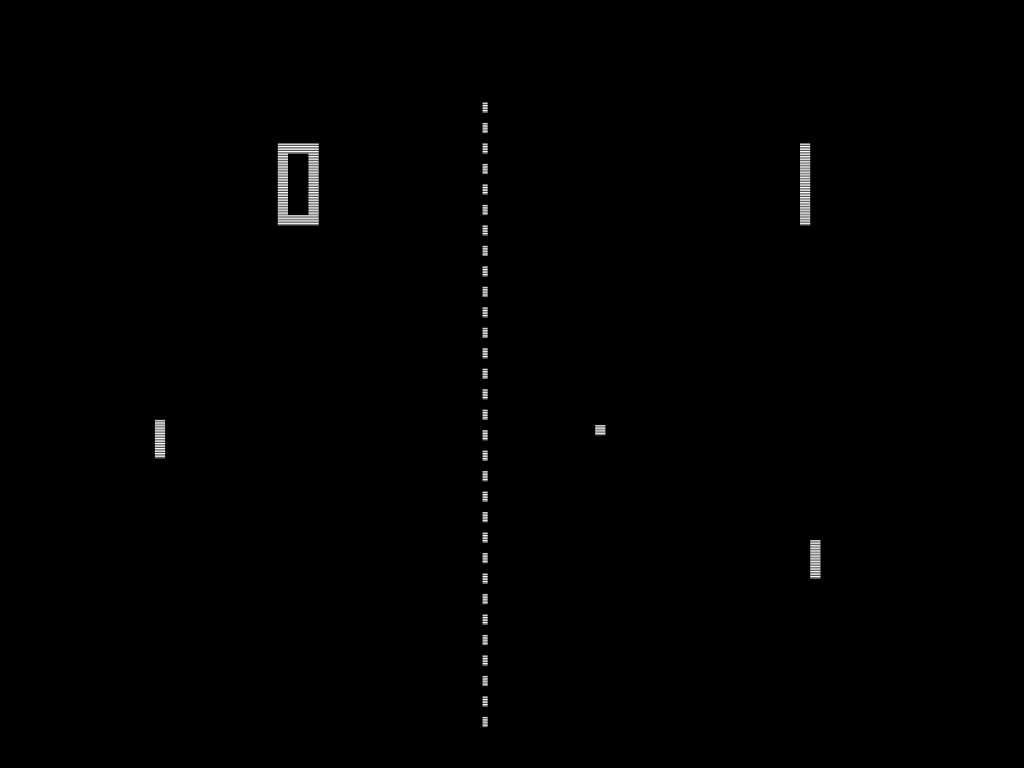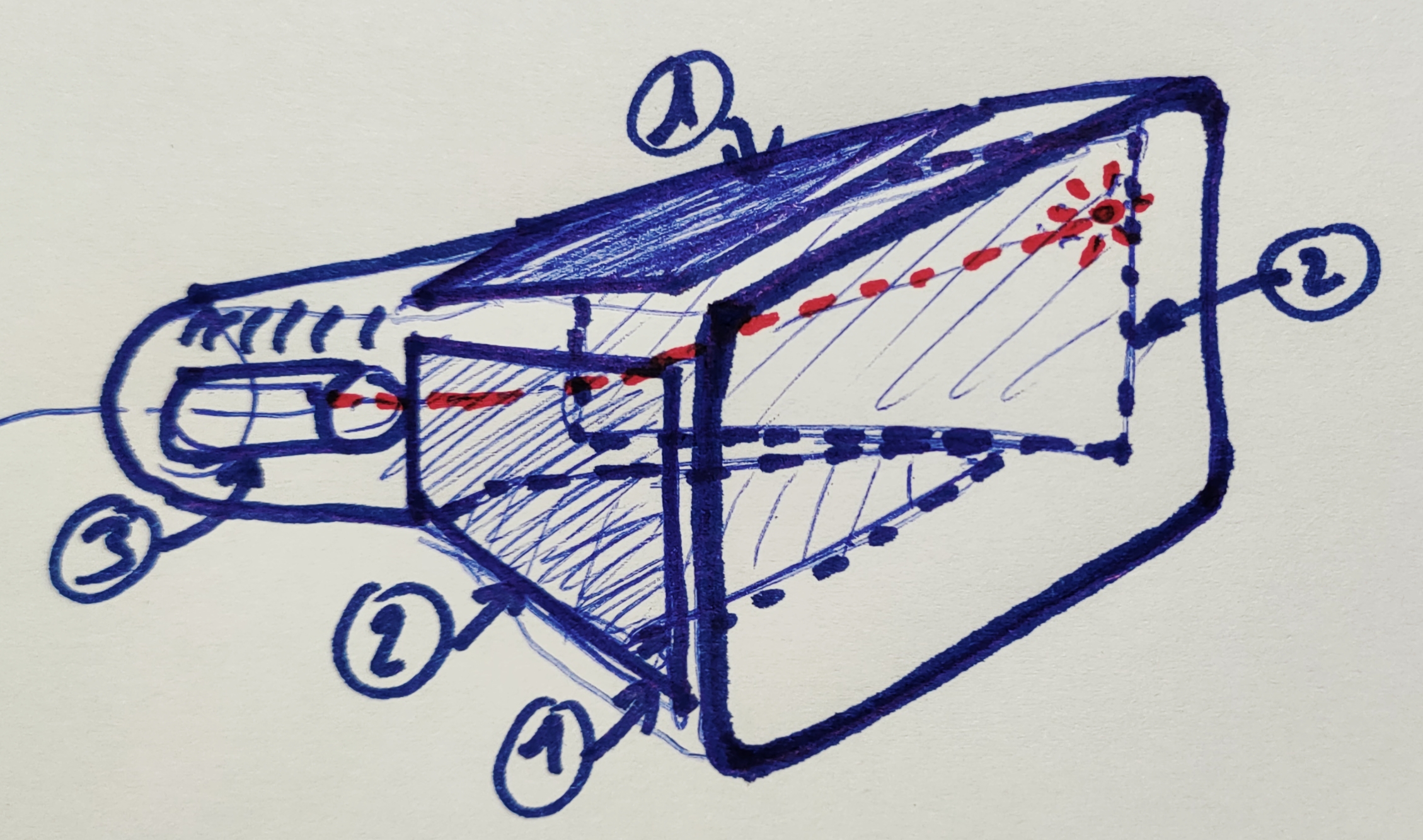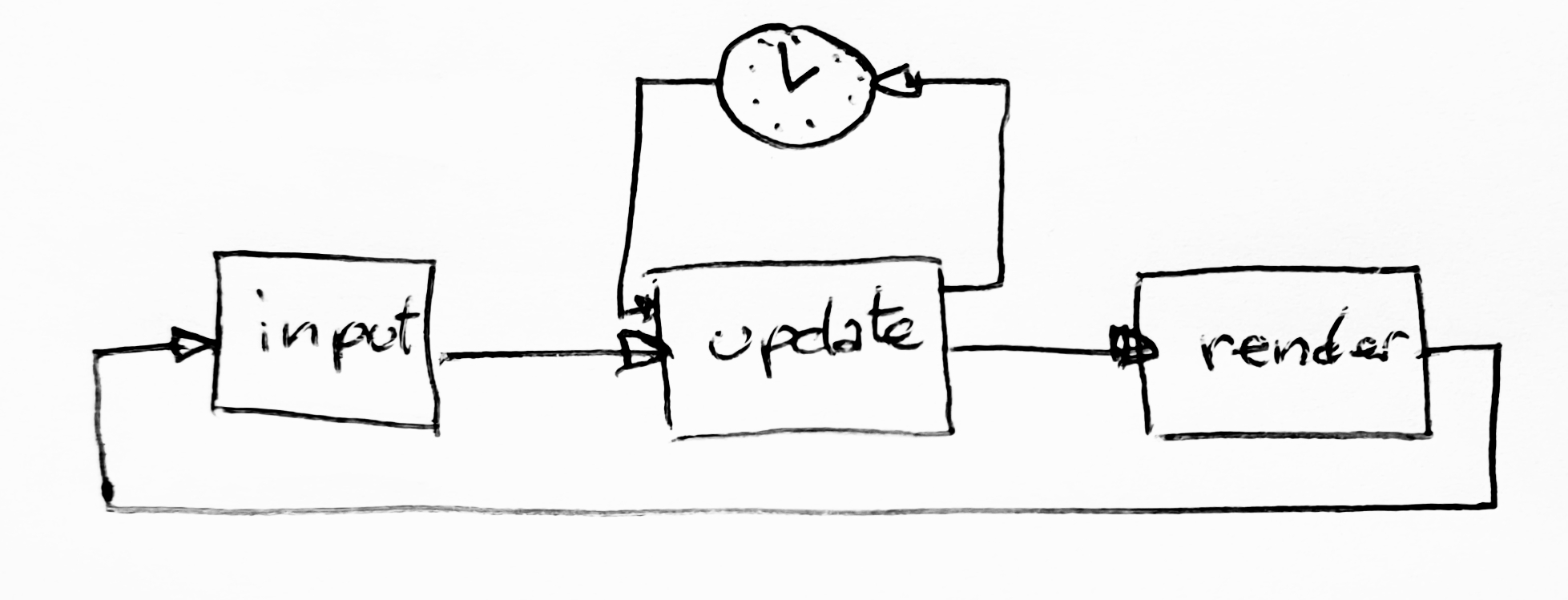fromClassToGame
A journey from a simple class to a game with the Java language https://mcgivrer.github.io/fromClassToGame/ , and open Hub https://www.openhub.net/p/fromClassToGame.
Adding a Structure
Core Game methods
So now we had a basic class for our game, we need to add more structure and more feature.
Code is better to understand:
public class Game {
// Entry point for the game.
public void run(Strng[] argv) {
initialize(argv);
loop();
dispose();
}
// Initialize resources
private void initialize(String[] argv) {
}
// the main Game Loop
private void loop() {
}
// free al resources
private void dispose() {
}
// the java entry point
private static main(String[] argv) {
Game g = new Game();
g.run(argv);
}
}
Our game will start with a main entry point: the run(argv) method.
This main method will delegate all the sub processing to other methods:
initialize(argv)will get cli parameters to set new values for title, width and height of the game window. more to come in the next chapters.loop()is the core processing for our game, this where all will happen.dispose()will be executed to free resources on an exit request, let out from the mainloop().
And the method main(String argv) to create and run our Game object.
We can also present this processing with a Sequence diagram:
The Game loop sequence diagram.
The Loop
The loop method is where the player(user) input will be processed and where the game and all its internal objects and
entities will be updated accordingly, and finally all those objects will be displayed, if necessary.
public class Game {
// the flag requesting the game to exit.
private boolean exit = false;
//...
private void loop() {
long start = System.currentTimeMillis();
long previous = start;
long dt;
while (!exit) {
start = System.currentTimeMillis();
dt = start - previous;
input();
update(dt);
draw();
previous = start;
}
}
// manage user inputs
private void input() {
}
// update Game objects and mechanism
private void update(long dt) {
}
// draw the Game objects to the window
private void draw() {
}
//...
}
So we will need the corresponding methods in our class:
input()will process user input (the player),update(dt)will compute position and behavior os objects in the game,draw()will display all the objects on the game’s window.
You’ve also certainly noticed the boolean exit, used to exit the main loop on user or game request. By default, the
boolean is false, and to request exiting, just set it true.
Another thing you probably noticed is the dt computation, passed to the update(dt) method. the dt value is the elapsed
time since previous update call. this will be used to compute some objects moves, taking in the time in math formula.
But before going further, we need a Game Windows ! So let’s add a JFrame to create a window and capture keyboard events:
public class Game {
// the flag requesting the game to exit.
private boolean exit = false;
// the game window
private JFrame frame;
//...
private void initialize(String[] argv) {
parseArgs(argv);
// define the JFrame window title
frame = new JFrame(this.title);
// please, close the window on exit request
frame.setDefaultCloseOperation(JFrame.EXIT_ON_CLOSE);
// define the window Size
Dimension d = new Dimension(this.width, this.height);
frame.setPreferredSize(d);
frame.setMaxSize(d);
frame.setSize(d);
frame.pack();
// let show the window !
frame.setVisible(true);
}
//...
}
input
We will need to capture the keyboard events to be able at least to interact with the player.
update
just update the object to be displayed:
draw
and finally draw things.
A bit of History
Why the game loop exists ? This is a very good question and the reason why is a historically based answer. Everything starts from the first ever video game: PONG.

The original Pong video game from wikipedia
At this very beginning time, the processor to execute tasks is a very a slow on, almost some hundreds of Khz as CPU frequency. To understand the scale we are talking about, current processor are running at 2 to 4 GHz !
So processor are very slow, each cycle of CPU is a precious one. So every line of code is very optimized and clearly dedicated to some precise tasks.
And another element must be taken in account : the display process. At this time, screen where not flat one with a bunch of LCD, but CRT ones. CRT display screen are based on ionic flow started from a cathode (electronic gun) and moving to the anode (the screen grid) to excite fluorescent layer in the intern face of the glass bulb.
And swiping the all surface of the screen has a time cost: to display 25 frame per seconds, we need 16ms to swipe a frame.

The CRT Tube is nothing more than a big bubble light. (3) the cathode emits ions (1) and (2) are anodes, deflecting ion ray to screen, lighting a fluorescent dot.
This is the available time for the CPU to prepare next image !
So capturing input, moving things and displaying things must be done in 16ms. And loop again for the next frame.
So the main process is a LOOP. that’s why we talk about a Game Loop:

The method to keep a fixed frame rate
There is also some advanced version of the Game Loop, where multiple update can be performed between each rendering phase, the timer is around the update methods only:

The advanced method to keep a fixed update rate
I can only invite you to read the fantastic book from Robert Nystrom for details about the Game loop.
